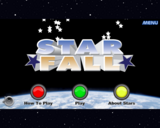
A bubble-breaker game clone that features facts about stars.
- Subject:
- Physical Science
- Material Type:
- Game
- Provider:
- NASA
- Provider Set:
- STEM Outreach
- Author:
- NASA
- National Aeronautics and Space Administration
- Date Added:
- 01/30/2023

A bubble-breaker game clone that features facts about stars.

Video presents a broad overview of what (NASA) satellites can tell us about how climate change is affecting oceans.

This series of four animations shows how some of the key indicators of climate change (average global temperature, sea level, sea ice extent, carbon emissions) have changed in Earth's recent history.

This static graph of changes in CO2 concentrations goes back 400,000 years, showing the dramatic spike in recent years.
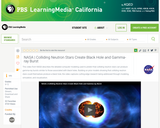
This video from NASA describes the detailed computer modeling used to predict that colliding neutron stars can produce gamma-ray bursts similar to those associated with black holes.

Coloring sheets provited by NASA.
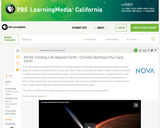
Visualize how comets carrying chemicals necessary for life could have made their way to Earth billions of years ago in this video segment adapted from NOVA.
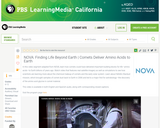
Amino acids, essential ingredients for life, may have been delivered to Earth by comets billions of years ago, as visualized in this video segment adapted from NOVA.

A pattern recognition game where players must drag the correct shape into the correct spot to complete the pattern.
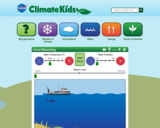
A game that teaches children about coral bleaching
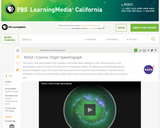
This video from NASA features the Cosmic Origin Spectrograph (COS), which allows scientists to use spectrographic analysis to assess the composition of intergalactic material.

Coloring sheets provited by NASA.

This short, engaging video created by NASA presents a complex topic via a simple analogy. The idea of positive and negative feedback is demonstrated by Daisyworld - a world with black and white flowers growing on it.

This NASA animation on land cover change zooms into Rondonia, Brazil. It starts with a Landsat satellite image taken in 1975 and dissolves into a second image of the same region taken in 2009 that illustrates a significant amount of land use change.
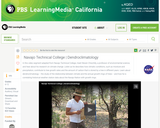
In this video segment adapted from Navajo Technical College, meet a dendroclimatologist who studies the relationship between precipitation and tree growth in the Navajo Nation.

This interactive visualization adapted from NASA and the U.S. Geological Survey illustrates the concept of albedo, which is the measure of how much solar radiation is reflected from Earth's surface.
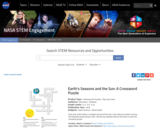
Each year, Earth makes a complete trip around the Sun! Learn about our planet’s journey and important points along its orbit. Visit the two websites listed to find clues to solve this crossword puzzle!
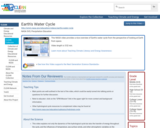
This NASA video provides a nice overview of Earth's water cycle from the perspective of looking at Earth from space.
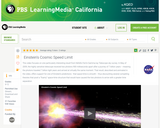
This video, adapted from NASA, presents rare experimental evidence from the Fermi Gamma-ray Space Telescope supporting Einstein's prediction that space-time is smooth.
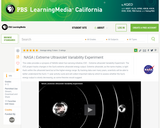
In this NASA video, scientists describe how the Extreme Ultraviolet Variability Experiment will sample and track the Sun's ultraviolet irradiance, providing a detailed time sequence of extreme ultraviolet output -- data that can provide advance warning for potentially disruptive energy bursts.